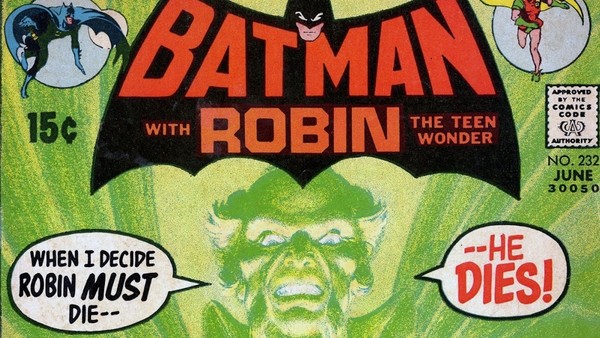10 Bronze Age Comics That Changed DC & Marvel Forever
6. Batman: Daughter Of The Demon

Batman #232 (June 1971)
In the Silver Age Batman was more popular than ever, thanks in no small part to the hit Adam West TV show. This meant, though, that the style of Batman in the comics tended to reflect the playful rainbow camp and knowing self-parody of that show.
In 1970 former Charlton Comics writer Denny O'Neil took up Batman writing duties and began to shift the tone once again. O'Neil's Batman was seen as a return to the character's roots as a vengeful, driven, obsessive, dark detective. His Batman stories had personal stakes and more darkly complex villains.
This was all exemplified in O'Neil's first major new contribution to the Batman mythos.
In Daughter Of The Demon Robin is kidnapped (no real change there), but this time shady mystic Ra's Al Ghul's daughter Talia has been kidnapped too, and so the villain gives Bats a lead on where to find them both. Everything from Ra's figuring out Batman's true identity and wanting Bruce to be his successor to Talia being in love with Bruce was already there in their first story.
The Batman-Ra's-Talia setup would yield some of the most interesting dynamics in future Batman stories, giving the Caped Crusader worthy adversaries, occasional uncomfortable allies and even his most impactful love interest.
O'Neil would build on successfully creating a new signature Batman villain by also revitalising some of the old ones. A few issues after Daughter Of The Demon he would reintroduce Two-Face, a character that the Silver Age had left virtually untouched, helping to make the multiple personality former-DA into one of Batman's greatest foes.